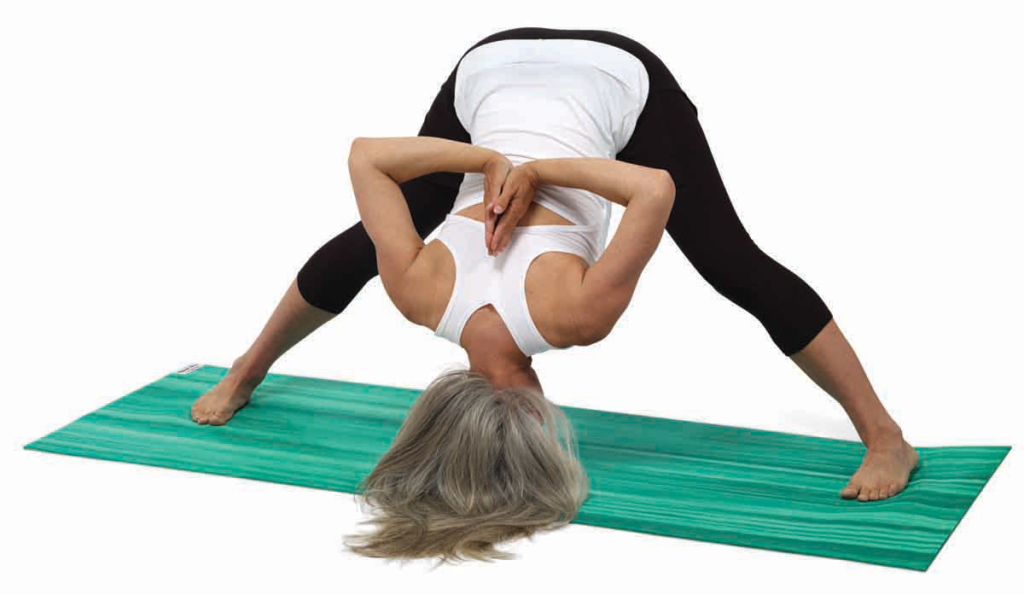
This January, I’ll celebrate my 40th anniversary of practicing yoga. I began practicing in my mid-20s and have practiced continuously since then. A whole lot has changed over the decades. In popular terms, today’s yoga is not the yoga of the past.
Yoga’s popularity has exploded in the past 20 years. And what constitutes popular yoga is completely different from what it used to be. In the ’80s and ’90s, Hatha Yoga was the most common form, with Iyengar-style practice as its most popular subset. Kundalini Yoga also had a strong following. Ashtanga was starting to get a foothold, but except for the few-and-far-between Ashtanga classes, vinyasa-style asana wasn’t the ubiquitous practice it is these days.
Even though Iyengar yoga was popular back in my early days of practice, it was still a small and relatively tight-knit community. You’d see the same faces at workshops all around the Intermountain West. I was one of those faces. I sometimes miss the small community of teachers from all over the West who gathered regularly to learn from senior teachers and from each other.
Yoga of the Past, Yoga of the Present
Things have changed in my own body and mind as well. Decades of practice have shifted my understanding, attitudes and priorities. And aging has changed my body. If we’re lucky, our bodies will survive into old age. There’s no getting around the fact that our bodies change as we age. It’s not a mistake. It’s written into our DNA. As with any physical practice, our asana practice must change in order to continue to be relevant to our lives. We must relinquish the yoga of the past to that of the present.
Back in the ’80s and early ’90s, fancy poses—the so-called “advanced” poses—were important to me. It’s not an exaggeration to say that they helped define my self-worth. Even though I knew that fancy poses are not what the practice was about, my body’s ability to do them made me stand out. It made me feel special.
My body’s abilities bolstered my sense of worth, but I can’t say that achieving fancy poses was ultimately all that satisfying. Even though I could easily perform most of the “advanced” poses, I still never felt good enough. As long as I was focused on achieving fancy poses, there was always another pose out there that was better than the asana I was currently practicing.
What the Yoga of the Past Leaves in its Wake
I’m not sure when this happened—I think it was a gradual process—but in the past 10-15 years, my practice has become simpler, slower, more present-focused. One by one, fancy poses have dropped away, and much to my surprise and pleasure, I’m totally fine with it.
This shift began even before I had bilateral anterior hip replacements. But I can’t deny that the surgeries were a pretty big wake-up call for me. I was born with shallow hip sockets—aka “hip dysplasia.” So hip replacements were inevitable. But I can’t help but wonder if constantly practicing in my most extreme end ranges might have sped the process up. Since then, my practice has become even simpler, more mindful and more satisfying.
Sure, there have been a few times when I’ve thought wistfully about those full Pigeons and 30-minute Headstands. But my body and mind have changed. Extreme poses no longer feel necessary—or healthy. Thirty-minute Headstands and full Pigeons don’t contribute to my ability to live gracefully in my everyday life.
I have two choices: I can spend my time and energy wishing for the return of my past (perceived) glories. Or I can finally enjoy my practice just as it is in a way that I couldn’t at the time I was rocking all those crazy poses. It’s ironic that my former Instagram-worthy practice generated a lot less happiness than my current simple, mindful practice does. Letting go of the pressure to perform has been a huge relief.
Lighten Up: Let Go of the Past
In a talk I heard years ago, author and mindfulness teacher Joseph Goldstein likened dwelling in the past to dragging around a corpse. Those past hurts and triumphs, the bodies of our past and those fancy poses are gone. Continuing to dwell on them weighs us down and makes it impossible to engage in our lives right now.
The best way to enjoy a rich and satisfying yoga practice is to be present with your practice as it is. That’s where the juice is. Now is where the yoga is. The first of Patanjali’s yoga sutras says: “Now begins the study of yoga.” There’s no yoga asana in the future, or in the past, that will ever be more transformative than the one you’re practicing right now.
Let go of the future. Let go of the past. Commit totally to your practice in this and every moment. It will never be better than it is right now.
